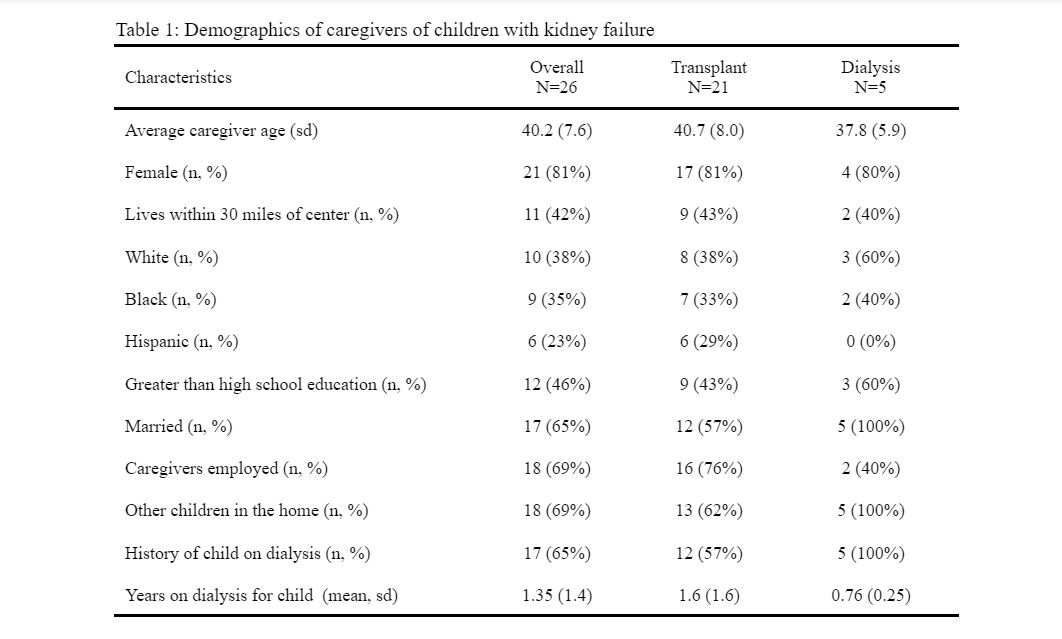Nephrology: Transplant
Nephrology 4: Transplant
45 - Assessing Burden Among Caregivers of Pediatric Dialysis and Kidney Transplant Patients
Publication Number: 45.349

Brianna Borsheim, MD (she/her/hers)
Resident
Ann & Robert H. Lurie Children's Hospital of Chicago
Chicago, Illinois, United States
Presenting Author(s)
Background:
Caring for children and adolescents with kidney disease places an enormous demand on their caregivers, although the full scope of this burden remains unrecognized. The Pediatric Renal Caregiver Burden Scale (PR-CBS) is a recently validated tool that evaluates caregiver burden in this population. Of the 30 caregivers approached, 26 consented: 5 of children receiving dialysis and 21 post-transplant. Participant survey completion was 100%. Total burden score was higher for caregivers of children on dialysis compared to those caring for children after transplant, but not significantly (160 vs 117, P=0.09). The mean score for every domain in the PR-CBS was higher for caregivers of children on dialysis with significant differences in family life and caregiver identity (respectively, p=0.04 and p=0.03). Demographic factors did not impact PR-CBS scores. Four surveys were completed in Spanish; no significant difference was found between those completed in Spanish and English. Caregivers of children with ESRD experience high levels of burden. There was a trend for higher burden scores among caregivers of children on dialysis compared to those caring for children after transplant, but numbers were too small to achieve significance. This study urges the need for a multi-center, adequately powered study and highlights an oft-ignored need for targeted interventions to enhance quality of life for children with kidney failure and their families.
Objective: We aimed to assess caregiver burden in pediatric end stage renal disease (ESRD) at a tertiary center pediatric hospital pre-kidney transplant (KT) on dialysis, early post-KT (30 days to 364 days), and late post-KT ( >1 year). We also aimed to demonstrate the feasibility of a translated PR-CBS among Spanish-speaking caregivers.
Design/Methods: In this cross-sectional study caregivers were approached, while their children were on dialysis or during transplant clinic visits, to fill out a hard copy of the PR-CBS independently. Total PR-CBS scores (ranging 51 to 255) and mean domain scores (ranging 1 to 5) were calculated with higher scores reflecting increased burden. Descriptive statistics and T-tests were performed to assess differences between dialysis and transplant, as well as within key domains.
Results:
Conclusion(s): 
.jpg)
